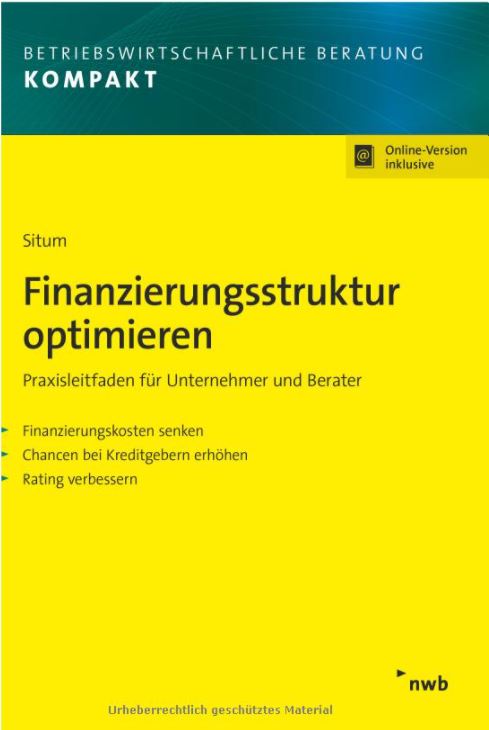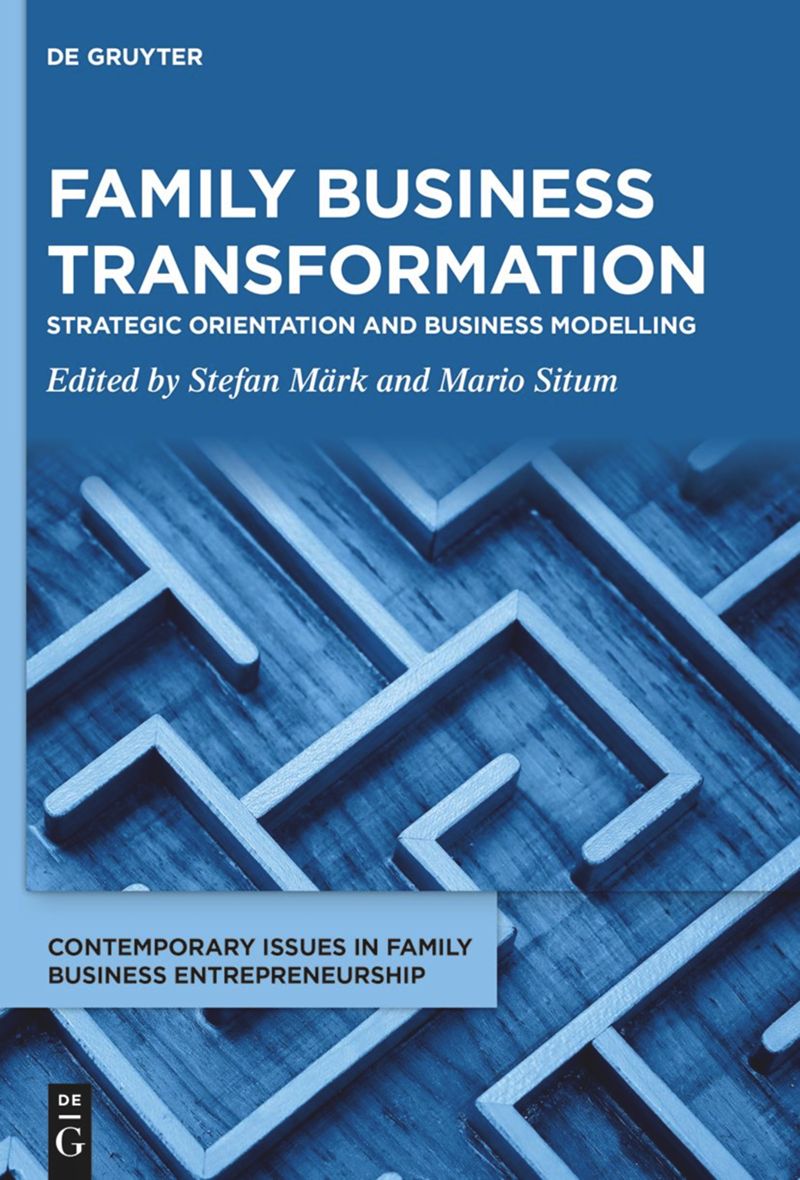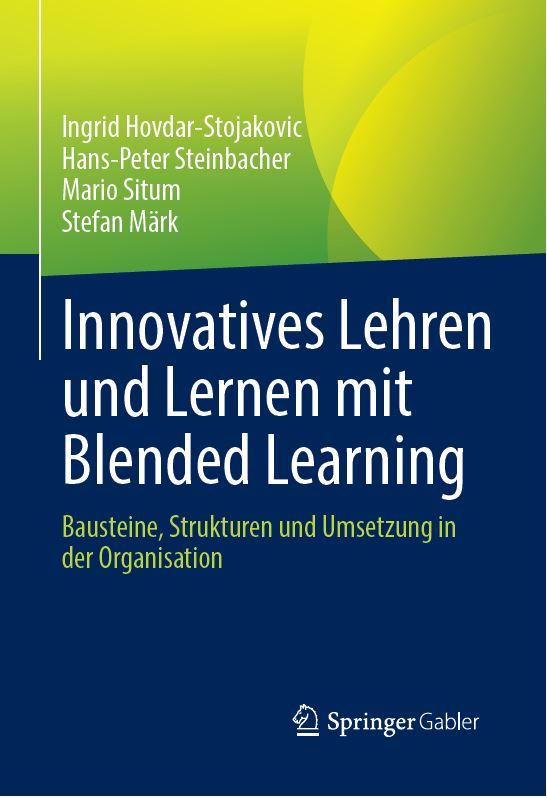Books
A good friend told me: "Once in your life you have to have written a book".
In the last few years I have been able to publish 3 books and 2 edited volumes in addition to the activities I have already outlined. In the following, these publications are described in a little more detail with regard to their contents. In addition, you will find the link to the homepage of the respective publisher when you click on the picture of the respective book.
Family business transformation: Strategic orientation and business modelling, Berlin: Walter de Gruyter GmbH.
Family businesses play a pivotal role in the global economy, and their successful development is of utmost importance. This first volume of the Contemporary Issues in Family Business Entrepreneurship series, focuses on the topic of family business transformation, which is causing drastic changes in companies' strategies and business models. Decisions to adapt or change family business strategy and/or the business model are always associated with risk. Family Business Transformation integrates work on the broad topics of transformation, strategy development, business model development, with the study of family businesses to provide family business owners, managers and entrepreneurs much-needed recommendations from best practice examples and/or empirical findings that can support decision-making in regard to the future direction of their companies. This book calls for a specialized examination of the social interactions among stakeholders, substantially expanding classical management theory. Scholars of family business, entrepreneurship and strategic management, institutional libraries and postgraduate students will find it an essential read and benefit from its insights.
- Offers important insights into family business transformation, within the trifecta of ‘Family Business, Entrepreneurship and Strategic Management’
- Provides an excellent foundation for further research questions, especially for Masters programmes.
Innovatives Lehren und Lernen mit Blended Learning: Bausteine, Strukturen und Umsetzung in der Organisation, Wiesbaden: Springer Verlag.
How can blended learning be used to promote organisational learning and efficiently design knowledge and competence acquisition? This book is aimed at all those who plan, design and implement learning scenarios in a corporate or university context. It is also aimed at human resources managers who want to set up and implement training and further education for employees in their own companies in a contemporary way. Learn how to design blended learning in such a way that knowledge is passed on to the intended target groups in a structured and systematised way, depending on the content, problem, level of difficulty and target group in the company. The authors take a well-versed and practical approach to the acquisition of competences and learning outcomes in particular, so that the greatest possible learning success can be achieved and measured during implementation.
- Knowledge society and theoretical paradigms
- Knowledge management and organisational learning
- From learning needs to implementation with blended learning
- Blueprints for learning
- Planning, design and implementation of blended learning scenarios
- Quality assurance, impact measurement and evaluation
Restrukturierungs- und Turnaround-Management: Strategien, Erfolgsfaktoren und Best Practice für die Transformation, Berlin: Erich Schmidt Verlag.
In order to recognize crisis situations in companies at an early stage and to initiate suitable reorganization measures to maintain profitability and competitiveness, extremely versatile strategic, operational and communicative qualities are required today. In the 2nd edition of their practical book, the experts led by Markus W. Exler and Mario Situm provide you with all the perspectives typical of turnaround and transformation processes from management and interim management, from credit institutions and other stakeholders.
- Crisis detection and analysis: crisis indicators, analysis methodology, identification of value creation potential.
- Initiation of turnaround processes: Leadership and stakeholder communication requirements
- Planning and implementation: e.g. generation of "quick wins", analytical, communication and organizational functions
- Strategic restructuring: change management, M&A, value-based management concepts
- Reorganization concepts according to IDW S6 as well as insolvency law specifics
» ... a process-oriented overview of all relevant (...) specifics to be able to professionally implement change processes in the company.«
To the previous edition in: Zeitschrift Controlling (ZC), 2/2014
Familienunternehmen und ihre Stakeholder: Problemstellung - Lösungsmodelle - Praktische Umsetzung, Berlin-Heidelberg: Springer.
This well-founded, practical book shows the special features of this type of company. Family entrepreneurs benefit from close ties. At the same time, these very same can cause strife, fear, anger and numerous discussions. The authors explore how family businesses are viewed by the lender, by the customer, by their own tax advisor, and what shapes this relationship. They also explicitly address the stakeholder perspective. Concrete case studies from science and practice open up a new perspective and approach to the family business for business owners and all persons involved in the subject.
- Basics: Learning and family business
- The world from the perspective of family businesses
- Stakeholder view I: Organization and management
- Stakeholder view II: Finance, legal and taxes
- Stakeholder view III: Procurement, sales and employees
- Family businesses as a discontinued model or a good alternative?
“... Numerous illustrations, the advantageous text layout as well as the deeply structured table of contents and an extensive index make it easier to gain benefit from this book. All in all, this is a work that is aimed at a broad target group and opens up an in-depth approach to the characteristics and peculiarities of family businesses. A valuable contribution to the problem and the potential of the middle class.”
Controller Magazin, Vol. 43, No. 4, July-August 2018
Finanzierungsstruktur optimieren: Praxisleitfaden für Unternehmer und Berater, Herne: NWB-Verlag.
Understand financing structure using practical examples. What is the financing structure? What impact will it have on my business? How can I optimize and control the financing structure? The book answers these central questions in a practical and solution-oriented manner specially tailored to the needs of SMEs and SME consultants, the author uses numerous practical examples to explain how the company's assets can be financed. Aspects such as rating or the possibility of planning and control through key figures are also discussed.
Especially practical: Numerous working aids facilitate implementation in the company. Other key points of the book:
- Reducing financing costs
- Rating improvement
- Increase chances with lenders
- Variants of corporate financing
- Parameters of financing and costs
- Risk management and financing structure
- The credit risk process
- Key figures for planning and monitoring the financing structure
- Starting points for optimizing the financing structure




